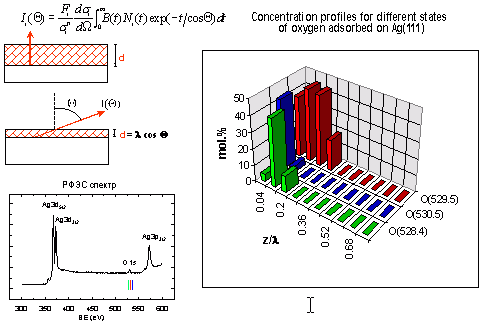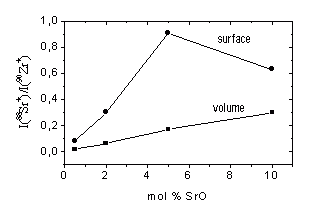
Phone: +7 (383) 330-67-71, Fax: +7 (383) 330-80-56, E-mail: bic@catalysis.ru
5 Lavrentiev Ave., 630090, Novosibirsk, Russia

Phone: +7 (383) 330-67-71, Fax: +7 (383) 330-80-56, E-mail: bic@catalysis.ru
5 Lavrentiev Ave., 630090, Novosibirsk, Russia
Elemental Analysis of the Solid Surface
Solid samples.
By XPS method are determined:
UPS method - for conductors and semiconductors:

Electron spectrometers VG ESCALAB HP and VG ESCA-3 (“Vacuum Generators”, Great Britain),
Solid samples of any morphology in the form of plates, powders, chips and others. The plate size is not less than
Leading scientists and their research interests
Prof. V.I. Bukhtiyarov. Study of adsorption and chemical reactions on the surface of model catalysts, study of the formation of heterogeneous catalyst active component.
Prof. A.I. Boronin. Study of the elementary steps of the mechanisms of adsorption and reaction on metal surface (oxygen states on metals, carbon monooxide oxidation, ethylene epoxidation, characterization of carbon materials).
Dr. A.V. Kalinkin. Study of the elementary steps of the mechanisms of adsorption and reaction on metal surface (oxygen states on metals, carbon monooxide oxidation).
Dr. I.P. Prosvirin. Study of adsorption, catalytic reaction mechanisms.
Dr. V.V. Kaichev. Study of heterogeneous reactions mechanism in situ.


SIMS-study of SrO-ZrO2 solid solution with various Sr-contant. Surface concludes 1-2 top monolayers, "volume" means a bulk after dispersion of the top layer 10 nm depth.
MS-7201 Mass-spectrometer (Sumy city, Ukrain)
Method sensitivity, % (mass):
Prof. V.P. Ivanov. Bulk and supported catalysts.